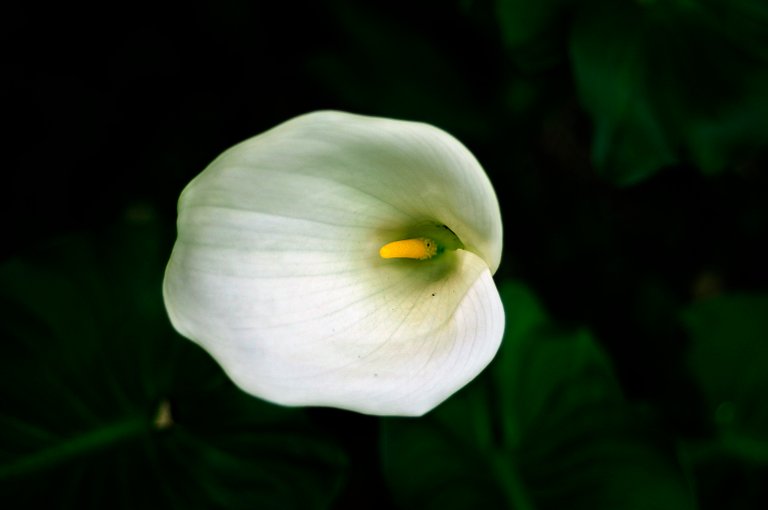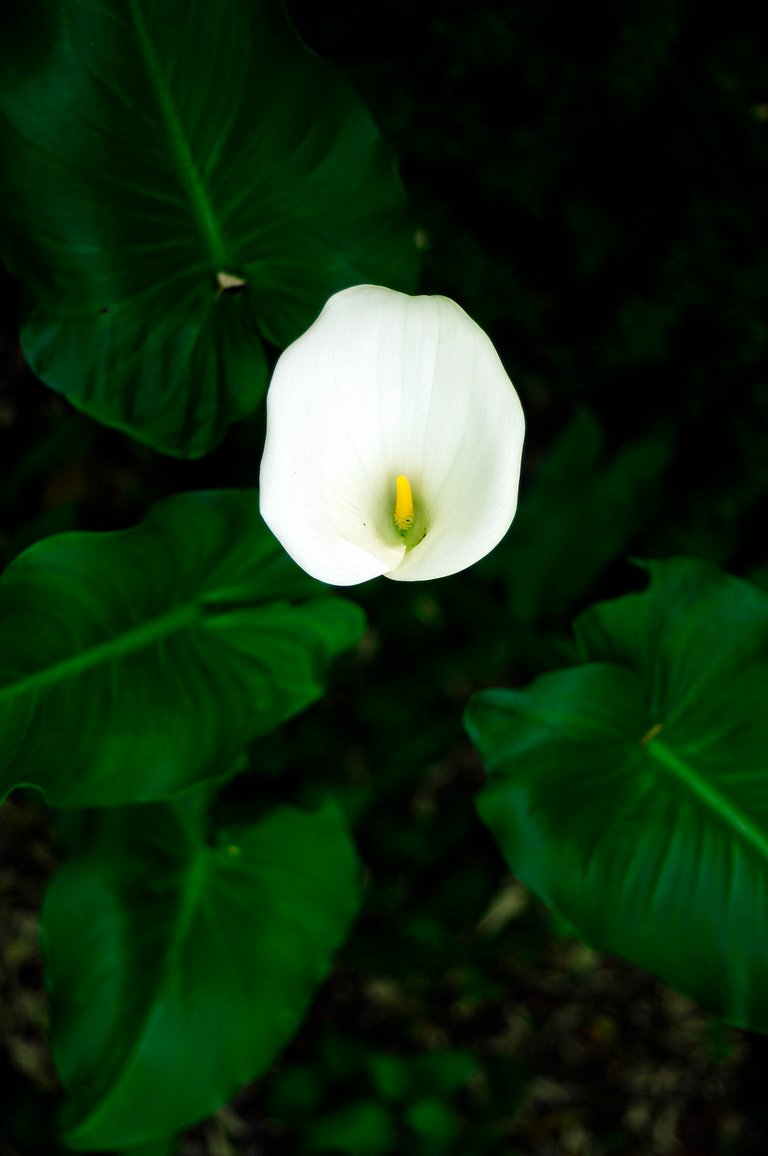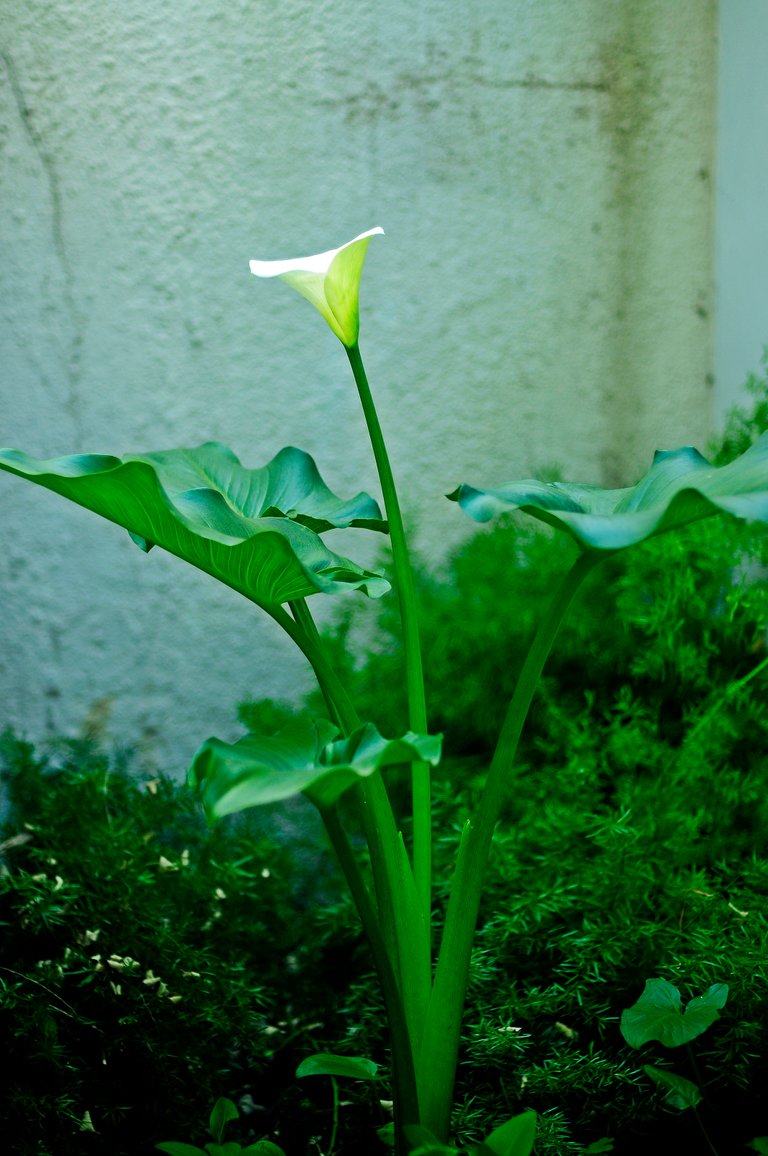Seeing the Growth of the Arum-lily: A Special South African Flower Symbolizing the Summer
Every spring after the winter rainfall, the Arum-lily (Zantedeschia aethiopica) springs up from seemingly nowhere. In my native language, we call it a "varkoor" or literally translated as "pig's ear". I think the resemblance is there, but I think it is also worth noting that the rhizome is enjoyed by pigs! So there is that connection as well. In any case, the plant is dormant in my area in the winter but as soon as the first warm days hit us, maybe 3 weeks before spring, the first green leaves will shoot out of the ground like spears. It takes all of the spring for the plant to prepare its flower to bloom into the iconic shape of the pig's ear.

Throughout the area (Western Cape, but close to Cape Town) you will see the white flowers standing proudly in fields, next to the road, in most peoples' gardens, and being sold at intersections. Yes, you read right, people sell the flowers at intersections. I have always wondered if these flowers are ethically sourced but I gathered that propagation via seeds is of a need as the plant grows via a rhizome. I have many plants in the garden and pots in which I divided the rhizome and made new plants. Also, I always cut the plants after the summer and before the harsh winter. They always grow back, signalling the summer.

The Necessary Lockdown Story
I diverge a bit. In my country's lockdown period in 2020, we rarely left the house. Nothing was open, the country basically came to a stillstand. I am fortunate to live with a family that allows me to work in the garden and do my things. But since this lockdown period, I began a habit of walking around the house, monitoring the various plants that naturally grow and die every season. In the corner where these photographs were taken, are various arum-lilies. And since lockdown, I came to realize just how beautiful some of them get. In this post, I share the progress of the common white variety, as the other ones have not begun their flowering stage.
I have taken 10 or so photographs as I saw it starting to flower. The first series of photographs are from the top, and the next is from the side. I think showcasing the flowering in this manner emphasizes the elegant and proud stature of the flower. It is such an amazing moment when the flower does open, and it symbolizes firstly summer, but also secondly just how amazing nature is, returning every year with this beauty.

Progression from the Top
The flower is home to various insects. In fact, trying to find a flower without various beetles or bees in them is hard when the flower is in the sunny open parts of the garden. This one is luckily secluded and in the shade, no bugs or bees in the flower as of yet.


But this creates a good habitat for various spiders and other species that eat the bugs and beetles. One of which is the white crab spider. I have not seen any of them in the arum-lilies, but they are scattered throughout the garden, along with the yellow crab spider. How amazing, though, is it that a plant is needed to attract insects which in turn lures spiders and other creatures!


As noted, these plants grow in abundance throughout the area after a good winter raining season. Driving along the main roads, one is always struck with the white beauty as their flowers stand in droves in the fields. Their flowers are a symbol of innosence, purity, and beauty, but for me they symbolize the arrival of summer.


An interesting note about this plant is the potential of it to clean up "contaminated soils and water". This is a good thing, as this plant is plentiful, grows easy, and it just looks beautiful. Imagine the possibility of it cleaning contaminated areas, its beauty would radiate, but there would be a clear sign of danger: Contaminated beauty, or something poetic in those lines.


Yet another interesing fact about the plant is that it is edible, but this claim is disputed. Containing high amounts of calcium oxalate crystals, if it is not prepared correctly it can be very dangerous. (Aparently, there are still cases of people being poisoned by eating the leaves.) I am not sure about how many people actually still use it in the culinary sense, but it is used as a medicinal herb. According to the author Bodiba (& et. al.):
However, the plant is usually used in traditional medicine.


I would also argue that having these flowers in your kitchen will put a smile on your face, and might even make you happy. This is purely anecdotal, as I am the only participant in this study!

Progression from the Side
I have recently been trying to document all the plants that grow in my garden. The shocking reality of this is that I have found so many alien and non-native plants that we have grown accustomed to. To my pleasure when I found out that this is an indigenous plant! I have never really dug deep into the this plant because it is so plentiful.


What always interests me is that this native plant, is considered a weed in other parts of the world. I have many discussions with people over the word weed and how we use it in langauge, but it always seems to me sad that such beauty can be classified as a weed. The same is said about the African Daisy. But how interesting is it that the African daisy and arum lily are considered to be great risks to the environment in Australia, but their native trees, like the Australian myrtle and black wattle, are seen as big environmental issues here in South Africa. It is almost like the South African plants and Australian ones want to compete on who can be the biggest weed and pest!


This particular one grew so much bigger than the normal ones. Normally because they are either grown in a pot or in tight clusters in the wild, they tend to not get bigger than roughly 1 meter tall. This one grew taller than that and the flower was really big.


In these photorgaphs and from this angle, it looks like an ice-cream cone! It is amazing when you see how these flowers open. It is actually the first time that I spend so much time looking at them. Normally we just see the opened flowers in the gardens and in the pots. Walking past these flowers each morning with some coffee in my hand, I could not help but bend down and admire the beauty.


I hope that you learned something from this long-ish post, and that you could admire with me the beauty of a flower opening up in slow motion.


I hope that this post brought you to a slowed-down state of mind, taking in all of the flower at each stage. It is a rather poetic moment, in which you slow down on something that happens in real time, to admire the beauty as if you could keep it still.

Do you have any experience with arum-lilies? Please comment below! All of the images are my own, the first three taken with the old Nikon D300, and rest with my iPhone. The ramblings are also my own, unless linked to the source. Stay safe, and remember to slow down, bend down, and smell the wild flowers!
Electronic-terrorism, voice to skull and neuro monitoring on Hive and Steem. You can ignore this, but your going to wish you didnt soon. This is happening whether you believe it or not. https://ecency.com/fyrstikken/@fairandbalanced/i-am-the-only-motherfucker-on-the-internet-pointing-to-a-direct-source-for-voice-to-skull-electronic-terrorism
oh yeah I remember that one, I almost never really paid attention to it! Beautiful isn't it?
I am about to slow down and lie down 😁
I hope the lie down was good!
I was in Kleinmond, a coastal town, and they were blooming so nicely all along the streams, but so easy to miss if you are not actively looking for them.
Oh yeah, that was exactly what I needed this lie down!
Never been to Kleinmond, not far from Cape Town and Stellenbosch. Man we wanna go back, there are so much town we want to visit still!
And lots of new smaller businesses opening up in these small towns! I hope it's a sign of the "middle class" taking form. I know of a few decent microbreweries that opened in seemingly desolate places.
microbreweries are always a sign of booming economy and hipsters not far!
That is indeed the case! My local brewery has luckily not fallen prey to the hipsters haha
It's ok be good with them haha
Hahah I do not have a problem with them. It is just that their presence drives prices up.